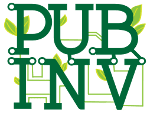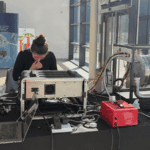Invention Coach:
Public Inventor(s):
Main Link:
Motivation:
This project aims to provide oxygen to hospitals and surgical facilities in rugged and low-income areas at the same quality as highly resourced medical centers and NASA. The ceramic ion transport device is optimized for low-income areas due to the simplicity of its design, which includes no moving parts except for a small fan. Additionally, it pulls oxygen directly from the air, thus avoiding the difficulty and expense of oxygen transport and maintenance. Finally, the digital control system, which Public Invention designed, will support the technology during brownouts and blackouts. This avoids loss of necessary resources during catastrophic events, which are common in low- and middle-income countries.
Story:
Public Invention and KidsOR members Courtney Ludick and Dave Tipping have teamed up with NASA to experiment with a new technology produced by American Oxygen. The NASA/AmOx/Public Invention system has been installed at the KidsOR headquarters in Dundee, Scotland.
This simple technology uses ceramic ion transport to pull oxygen directly out of the air, and it is expected to find use in hospitals in remote and rural locations. Public Invention also designed a data acquisition system that constantly logs purity for three different kinds of sensors, and measures flow against 100 psi pressure. These measurements are sufficient to someday allow a KidsOR installation to bottle oxygen directly.
Learn more about the development of this project in this article.
Status:
Skills Needed
As per the NASA-MCOG project, which this generator has developed from:
The project team requires skills in microcontroller programming, system architecture design (e.g., state machines and hardware abstraction), and familiarity with platforms like PlatformIO.
Additionally, expertise in embedded firmware development, sensor integration, and hardware control is necessary. Proficiency in C++ and experience with serial communication protocols (e.g., JSON) are essential. The team should also have basic knowledge of life support systems and oxygen generation technology, along with a commitment to open-source collaboration.
Quarterly Goals
KidsOR is currently running a six month experiment to check that the system can work uninterrupted for an extended period of time without losing the oxygen’s purity, flow, or pressure.
Photo Gallery
Request A VentMon
If interested in learning more about our other active projects, check the following pages for updates and similar volunteer opportunities:


